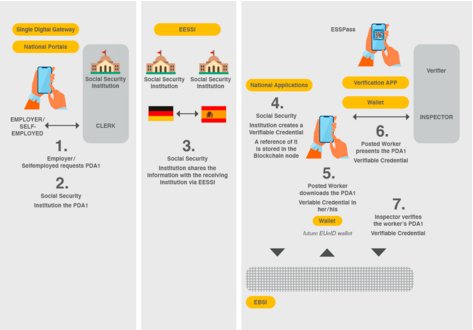 vladimirsukhachev
vladimirsukhachev
Digital Social Security Card
and European Identity
ed* Nr. 02/2023 – Chapter 5
The European Social Security Card (ESSPASS) is nothing more than a digital summary of important social security documents such as the A1 certificate or the EHIC. The ESSPASS is in turn to be part of a European digital “wallet”, which in turn is part of a European Commission proposal for a digital identity (eID)1. This is because every EU citizen is to have an electronic means of identification in the future, which will be valid for both the public and the private sectors. In future, the eID can also be used for identification and authentication, for example, for internet payments, opening accounts online, etc.

We want the
digital social security pass.
An initial pilot project by the European Commission and the Italian social security institution Instituto Nazionale della Previdenza Sociale (INPS), in which the Association of German Pension Insurance Funds also participated, had shown: The A1 process can be implemented completely digitally. The digital flow is applied according to the scheme shown below.
Digitisation of social security

Based on these findings, two consortia are currently working on the further development of the “wallet”, each with different questions. In the area of social security, focus is now on preparing for the digital implementation of the A1 procedure and the EHIC. The larger project “Digital Credentials for Europe (DC4EU)” involves 80 organisations from 20 Member States plus Norway and Ukraine, while “Verifiable Credentials and Trusted Organisations Registries (VECTOR)” involves 50 partners from 20 countries. From the German Social Insurance system, the National Association of Statutory Health Insurance Funds (GKV-Spitzenverband) and the Association of German Pension Insurance Funds are contributing. As a first milestone, business plans are to be developed by the end of the year that map the respective processes from application to verification in each of the other EU countries. This alone is a very complex undertaking given the diversity of the countries with their sometimes very differentiated structures. At the same time, the foundations for the second milestone, the “onboarding” of the social security institutions and the authorities and healthcare facilities involved, are to be laid.

